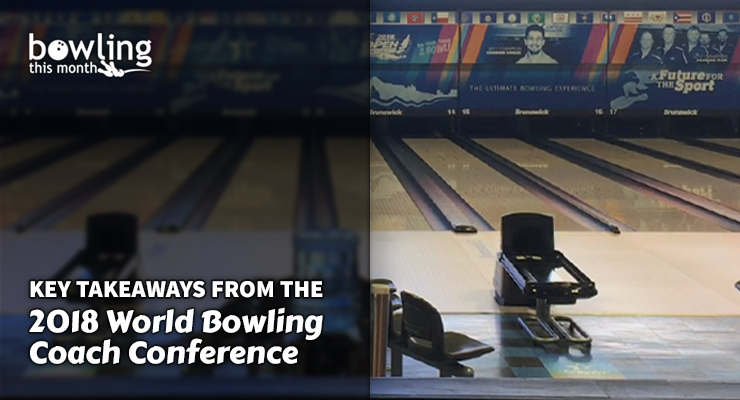Article Contents
- 1. Youth bowling
- 2. The physical game
- 2.1. The relationship between alignment and timing
- 2.2. Another view of timing
- 2.3. Two-handed bowling
- 3. The mental game
- 4. Ball motion
- 5. Moving forward
Note: This article is only available to Bowling This Month subscribers.
Every two years, the USBC hosts the World Bowling Coach Conference, inviting coaches from all over the the world to speak, learn, and network together. In a room full of youth league, high school, and college coaches—along with coaches from national programs around the world—it’s impossible not to learn something.
This article is intended to summarize some of my key takeaways from the 2018 event, in hopes that our readers can benefit from the combined experience and wisdom that was assembled for three days at the USBC’s International Training and Research Center. Given the variety of backgrounds and subjects, I will group them based on their general category: youth bowling, the physical game, the mental game, and ball motion.
Youth bowling
Several presenters talked about youth bowling and initiatives designed around athlete retention and recruitment. Most youth sports are in a period of decline, thanks to the prevalence of video games, the variable work schedules of parents, and the amount of competition among sports and activities for family time.
One of the key research findings was that 70% of kids quit youth sports by the age of 14. As a director of a youth league myself, I have seen this attrition personally. It’s why recruitment is so important to a successful youth league. Attrition is unavoidable, but it is still possible to reduce it.
“Kids just want to go there and enjoy themselves.”
Research into kids sports shows that the most common reason for kids leaving a sport is that it isn’t fun. A lot of the research points to parental and coach pressure to win as a primary driver of this. Creating a league environment that allows kids to be kids—and not just potential future professionals—is one way to help maintain interest in the league. Once a kid is hooked, then they can commit to the work needed to improve to a very high level.
In his talk on the mental game, Dr. Dean Hinitz used the example of kids explaining why they liked gymnastics: they all related it to the joy of movement, running, jumping, etc. Asking adults and older teens, the answer had changed to outcomes like medals. From his perspective as ...
Already a premium member? Click here to log in.


